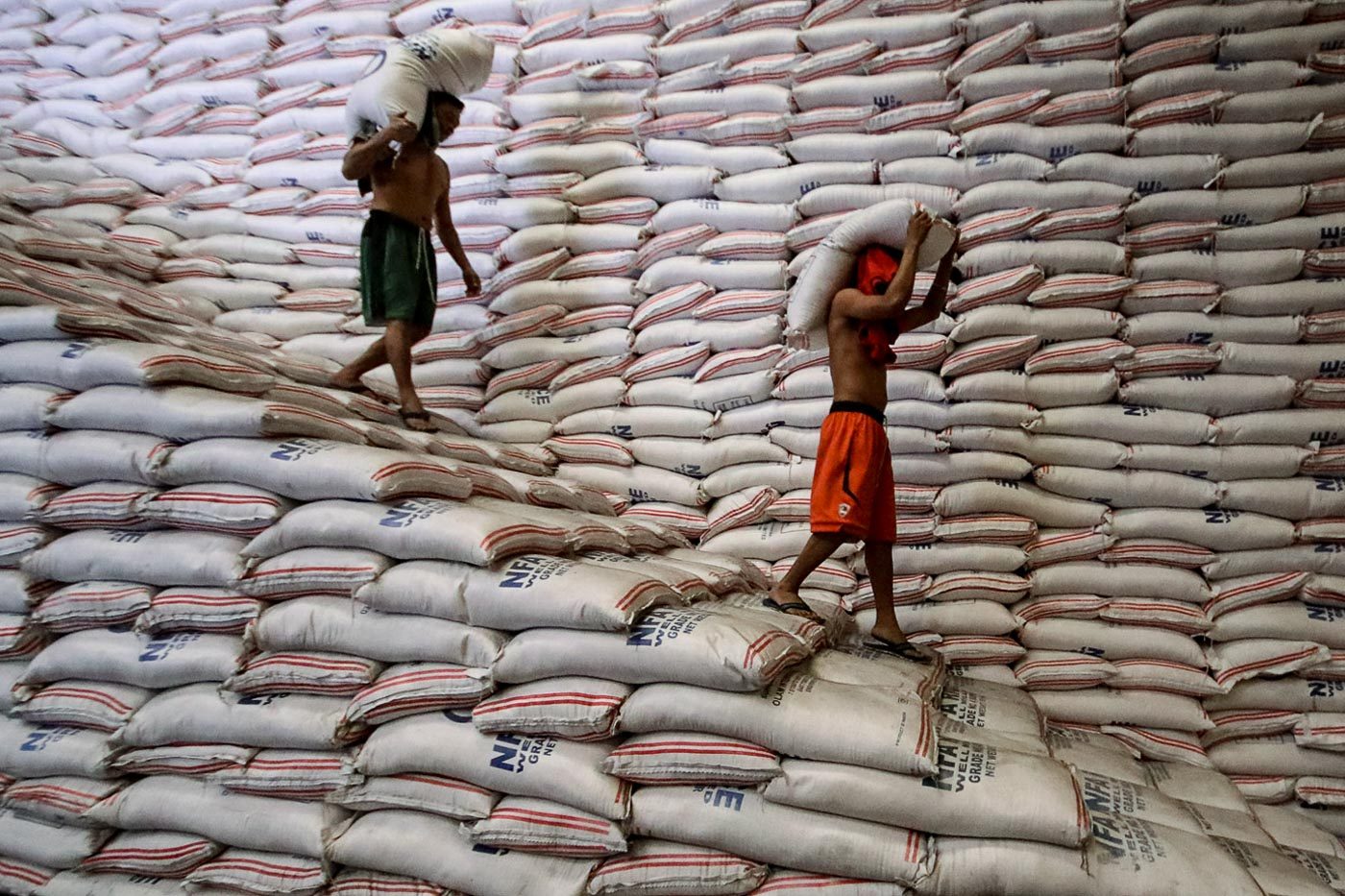SUMMARY
This is AI generated summarization, which may have errors. For context, always refer to the full article.

MANILA, Philippines – After President Rodrigo Duterte gave the green light to the Rice Tariffication law, the government has been in talks with stakeholders and other agencies on how to implement it.
The National Economic and Development Authority (NEDA) led the talks for the implementing rules and regulations (IRR) and was expected to release the details in the coming weeks. (READ: Butterfly effect: How rice tariffication bill affects everyone)
Before getting into the details of the law, here are some of the common terms often used and will come in handy in understanding what the law is all about:
Tariffs – These are taxes imposed by government on imported goods. While it serves as a source for revenues, it is also a way to restrict trade and protect domestic producers. Tariffs make imported goods more expensive.
Quantitative restrictions – This is the limit to the amount of goods that may be imported in the country.
Quantitative restrictions are imposed on rice to protect farmers from the influx of cheap rice from abroad.
However, the government found that QRs have not been beneficial to both consumers and farmers.
Minimum access volume – This refers to the quantity of a specific good that may be imported with a lower tariff. For rice, the minimum access volume is 350,000 metric tons. Anything beyond that is slapped with higher tariffs.
Below are the common questions regarding the new law and the answers provided in the draft IRR.
What changes will we expect under rice tariffication? The new law completely abolishes quantitative restrictions to ensure a steady supply of rice in the domestic market.
However, higher tariff rates would be slapped on imports. The tariffs, set at 35%, would now serve as the control mechanism instead of an explicit limit on imports through quantitative restrictions.
The government’s economic team said this will lower rice prices and the inflation rate overall.
Under the law, market forces, not government interventions, will prevail. In theory, competition will bring prices down.
How low will rice prices go? The government has not yet set a range of expected rice prices under rice tariffication. However, experts estimate that prices can go even lower than what is being sold by the National Food Authority (NFA), which is at P27 and P32.
The measure is also projected to lower inflation rates by 0.5 to 0.7 percentage points.
What happens to the NFA? The new law clipped the powers of the NFA. From ensuring the quantitative restrictions are in place, the agency’s role is now just limited to buffer stocking or storing rice to be given out during calamities and emergencies.
NFA buffer stocks will continue to have 15 to 30 days of inventory stock.
The agency will also buy rice exclusively from local farmers.
NEDA Assistant Secretary Mercedita Sombillo said that should there be no emergency, rice stocks of the NFA will be bid out for market distribution.
What about the farmers? Groups fear that rice tariffication will hurt farmers, as it encourages more rice imports.
The law provides safety nets for local farmers under the Rice Competitiveness Enhancement Fund (RCEF) to fund better farming tools, seeds, and other interventions that will improve productivity.
The RCEF, amounting to P10 billion, is a fund that will be over and above the regular budget of the Department of Agriculture.
The draft IRR said an efficient monitoring system will be established to ensure that the fund benefits the farmers. The DA is compelled to create a website to inform the public on the plan and progress of how the fund is used.
Aside from the RCEF, the government already released P5 billion to assist farmers through a special allotment release order.
She said domestic traders have to learn futures trading.
“Our own domestic traders will have to learn how to do this, they have to become sophisticated,” Edillon said.
Meanwhile, Sombillo said traders and the market in general is “rational,” which means they will not import at a time where domestic supply is high.
How will supply issues be addressed? The draft IRR provide the President powers, for a limited time, to lower the applied tariff rate in case of a forecasted shortage.
The 3-year import average will also be noted by government.
Sombillo said should imports exceed the average, the draft IRR proposes that the government will impose a cap, which is 125% of the 3-year average.
What is the long-term plan for agriculture? The DA will formulate the Rice Industry Roadmap in collaboration with relevant agencies and with due consultation with other stakeholders.
The DA, together with NEDA, the Department of Budget and Management, Department of Finance, and other concerned agencies shall ensure that the activities and investments necessary for the roadmap are funded in accordance with the annual budget priorities framework.
Will rice tariffication live up to its promises? Observers say it is better, as it is the biggest revamp yet in the agriculture sector. – Rappler.com
Add a comment
How does this make you feel?
There are no comments yet. Add your comment to start the conversation.